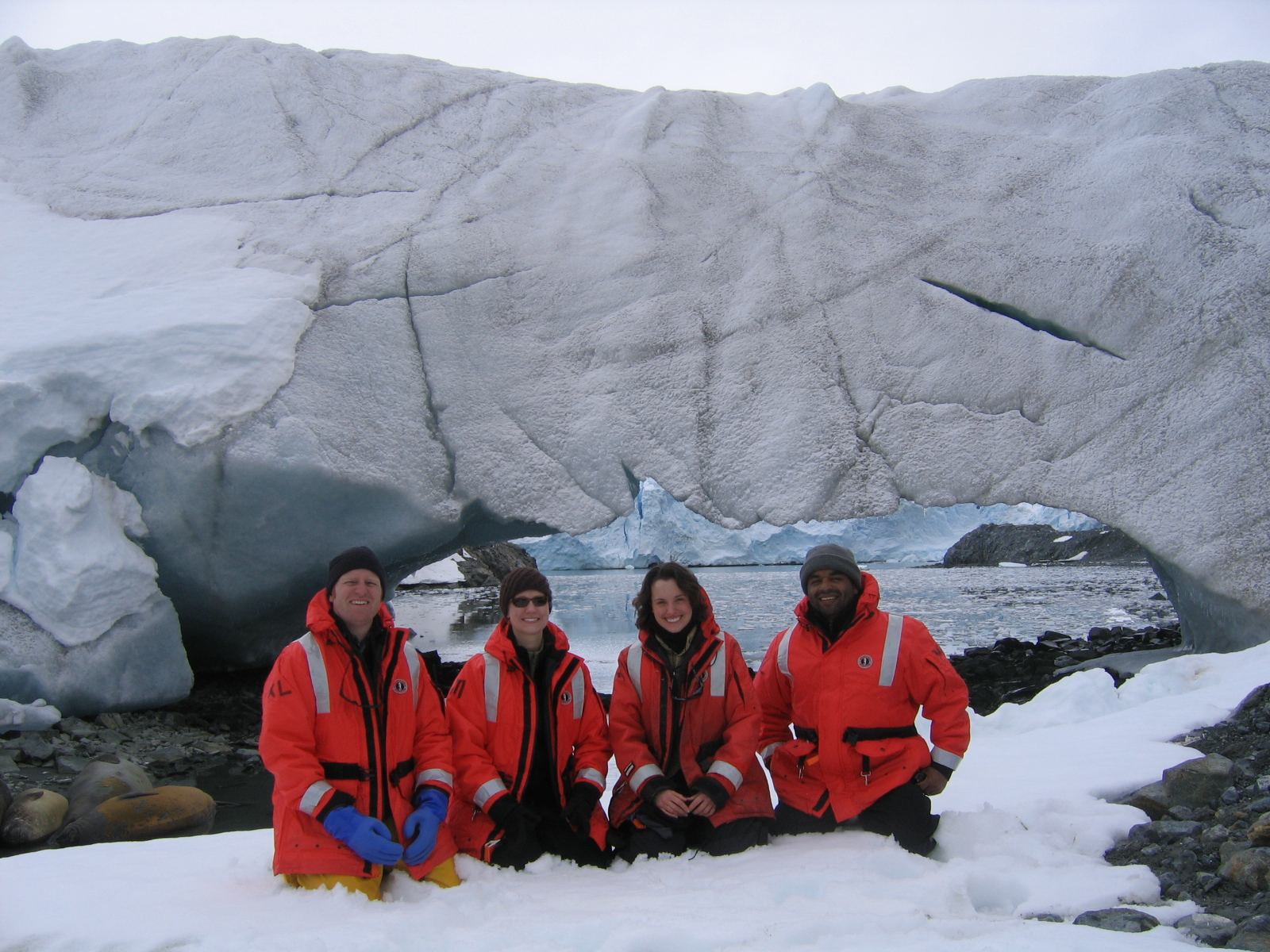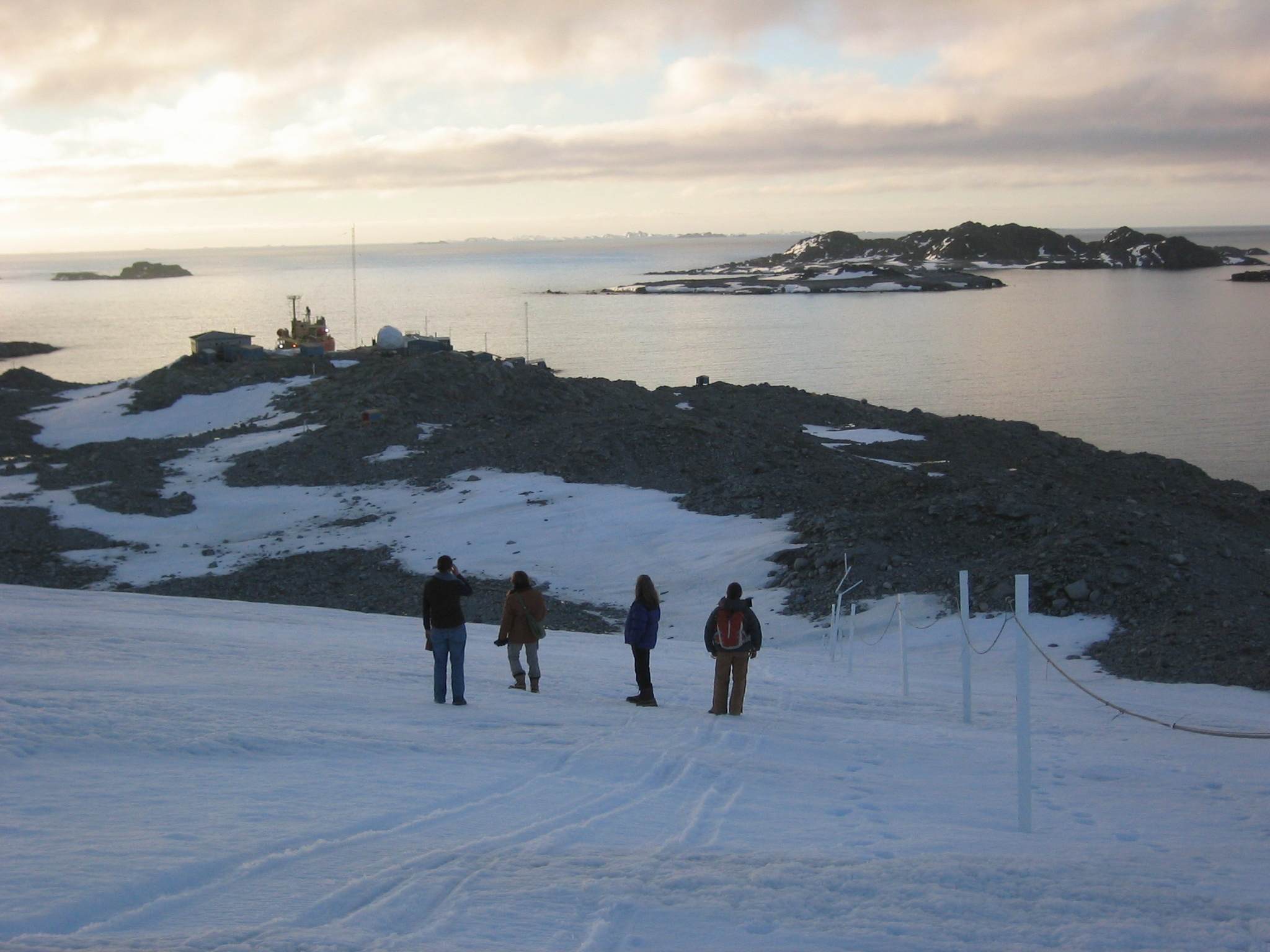In Port at Palmer Station
Amid the hard work and chaos of the Palmer Station port call, we are generally able to grab a few moments to partake in various recreational activities. Two examples include boating operations and hiking up the glacier behind Palmer.
The Antarctic weather is unpredictable and necessitates extra caution for outdoor activities. Our pre-port call briefing includes a small Zodiac boating course allowing folks to visit a few of the numerous small islands in the Palmer Archipelago. Though boating operations are restricted to decent weather conditions (winds under 20 knots), bad weather can move in quickly down here, so extra caution is mandatory. Every boat must contain two certified drivers, each with a radio, and all local islands have a waterproof survival cache containing tents, food, and water.
Once savvy on the boating regulations, our folks were able to visit a few of the highlighted features near Palmer.

Members of the microbial ecology team Matthew Erickson, Kristen Myers, Erin Morgan, and Aaron Randolf pose in front of a beautiful glacier ice arch.
From year to year, station personnel observe the glaciers melt, calve, and disappear, demonstrating some of the more obvious effects of global climate change in this region. The Palmer Station annual average winter temperature has increased 6º C over the last 50 years, which has significantly increased the rate at which these glaciers are melting. Each season, we also see regional decreases in the Adélie penguin population while more northern penguin species, such as Gentoo and Chinstrap penguins, move in. Again, these changes are strongly correlated with global climate change.
Leaving the station to walk up the glacier also requires some measure of precaution, but the view is well worth the effort. Each hiker must sign out on the public chalkboard with the time of departure and the estimated time of return. Each season, the glacier search and rescue team at Palmer flags a safe route devoid of crevasses (deep cracks in the glacier ice) for hiking to the trail limit, demarcated with a fortuitous clear view of Mt. William in the background.

Taking advantage of the glorious bluebird day we had while in port, some of my fellow phytoplankton researchers, Karie Sines, Katie Haman, Diane (PD) Chakos, and I gaze out over Palmer, the LMG, and the Palmer Archipelago soaking in the lingering twilight.

 No comments
No comments 






